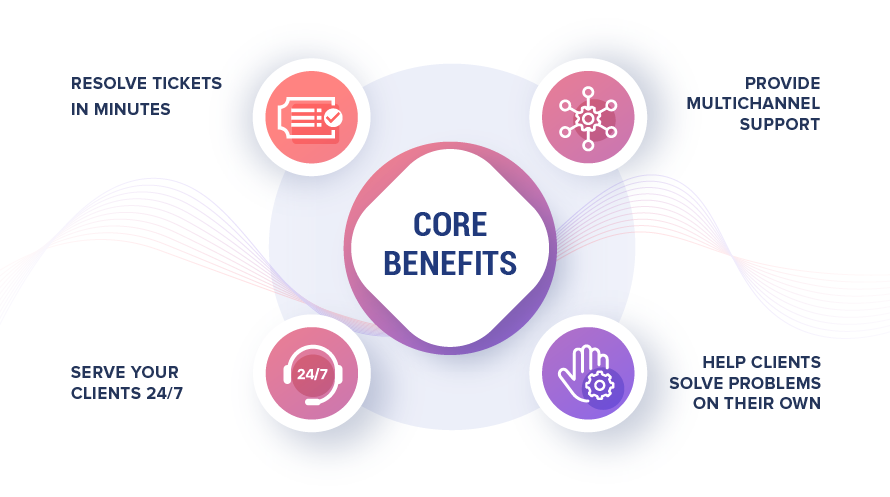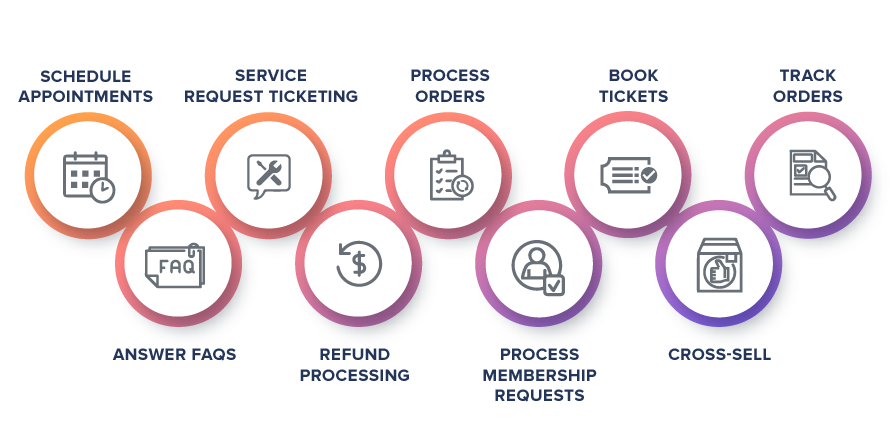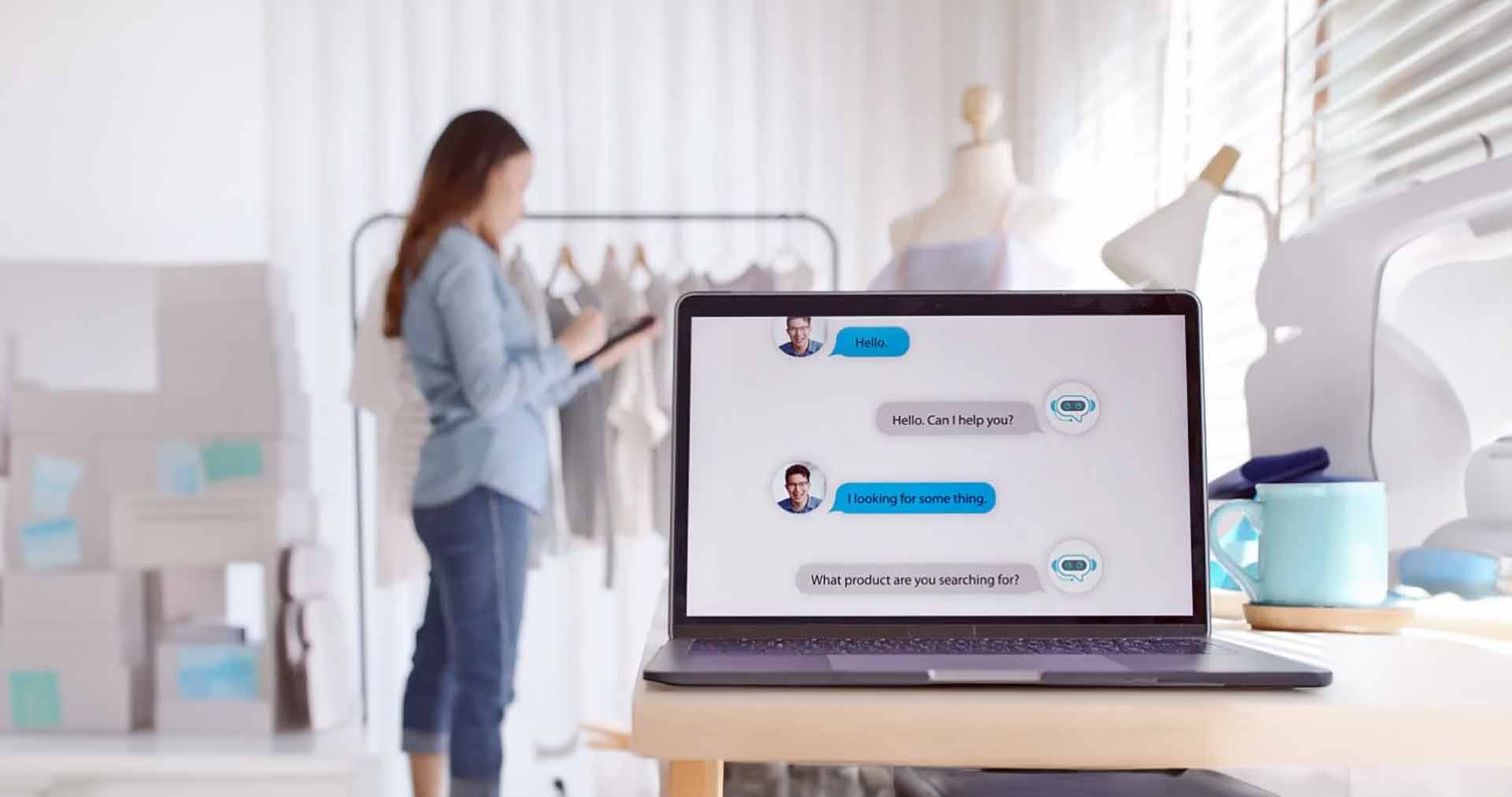The rapid involvement of technology in our daily lives and its increasing reliance on consumers has made it imperative for organizations to offer smarter & better support services.
One of the most intuitive and intelligent tools that every modern-day business must consider for integration with their platforms is “bots.” Acting as the first point of contact a customer service chatbot can help consumers regarding any queries they might have. It offers an excellent way for businesses to reduce their support cost and accelerate resolution times while enhancing the CX!
Did you know virtual agents allow optimizing expenses while helping retain an excellent level of support? Here are a few statistics to justify this claim;
- Gartner suggests that by 2022 and beyond more than 70% of the white-collar workers would interact with conversational platforms like chatbots daily.
- WestJet – A Canadian airline experienced a massive increase of 45% in user requests during the 2020 COVID-19 crisis. To uphold its unrivaled service quality, the company used a custom-made agent.
- McKinsey suggests that 70% of monotonous admin tasks in the healthcare industry can be automated using AI chatbots.
So, if you’re planning to deploy a chatbot that can delight your clients and drive more conversions, then this blog will walk you through the essentials of a profitable bot.
Why Your Business Needs A Customer Support Chatbot
The client service departments perform several routine tasks daily. In various scenarios, most of their time is spent addressing repetitive queries, like:
- How do I place an order?
- What are your business hours?
- Can you help renew my membership?
- How can I make a reservation?
- Where can I find a store near me?
A bot can help the organization achieve the end goal of making a client happy. You would agree, a satisfied consumer can enable an increase in the retention and engagement rate. And, if you’re also one of those businesses catching up to adopt chatbots for customer care, it is vital that you first learn the essentials of why to build it for your support service. Here’s a blog you might find interesting that covers the must-have aspects for modern enterprises ranging from a startup to a large enterprise.
Benefits of Chatbots In Customer Service

- Resolve tickets in minutes: What your impatient consumers want is a quick, reliable and satisfactory answer. As long as a chatbot can do that instantly, they’re open to using them.
- Provide multichannel support: To provide an excellent CX, brands must be available wherever their target audience is. It’s not your choice; the choice belongs to your clients. So, keep your support seamless & speedy on every platform.
- Serve your clients 24/7: Round-the-clock availability is no longer an option! Having a chatbot to attend to your audience instantly not only means extra dollars for your business but also big savings on mundane human efforts.
- Help clients solve problems on their own: Self-help bots can educate your target audience, answer their basic questions and eliminate the need to contact your human agents. This will greatly reduce your support volume while enhancing product engagement.
Top Features to Consider For Customer Service Chatbot Development
Would you agree that both your existing and potential clients would expect nothing less than a great experience when interacting with your brand? If yes, then why not go over the list of specific features. While it is not exhaustive but these are the must-haves for any active bot today.
- Omnichannel Messaging: Allows deploying bot on multiple platforms like website, mobile application, WhatsApp, Facebook, etc with easy capture of user interests & preferences so you can leverage past interactions to steer your future conversations in the right direction. For ex – if a user provides the bot their order number, email address, or any other personal information and when it comes time for the bot to transfer the visitor to the website, the same input gets auto-loaded onto the order form.
- Multilingual Capabilities: It is crucial for companies with a global & ethnically diverse target market. With custom bot development, you can set up end-to-end flows in the language of your choice and offer prompt support in multiple languages for improved client satisfaction.
- Third-party App Integrations: You can further enhance the bot functionality by using API connectors. They can easily extract data from other tools such as your database and CRM platform to make the human-bot interaction seamless, relevant & productive.
- Visual Flow Builder: Building a bot should be quick & easy. A low-code bot builder like Microsoft Power Virtual agent enables the creation & deployment of an interactive assistant – quickly and effortlessly. You can use this conversational agent to automate resolutions for FAQs and suggest answers for repetitive queries.
- Reporting and Analytics: To improve client satisfaction, it is must to dig deeper into how their users interact with the bot in real-time. The backend reporting and analytics capabilities enable tracking to help analyze user intent and satisfaction levels. This helps improve overall CX.
- Chat Transfer to Human Agent: A customer support chatbot with ML model incorporated can smartly manage interactions of any nature. However, there are times when these interactive agents fall short and human intervention becomes necessary. In such scenarios, a well-defined fallback ensures that the bot can transfer the live chat to an agent for a swift and seamless resolution.
Customer Service Chatbot Use Cases with Industry Applications

- Schedule Appointments: With a patient care bot, healthcare organizations can facilitate quick and easy appointment scheduling. Patients can chat with a conversational agent to book an appointment with a specific doctor and get a reminder before their visit.
- Service Request Ticketing: Approval, tracking & management of assigned tasks is usually a challenge with support teams (be it IT, Admin, or HR). A dedicated bot with a mobile-first interface can help with faster processing and assigning of requests to service agents. Also, it allows users to submit a new request or check the status for previous ones – anytime and anywhere.
- Process Orders: Online ordering is trending across social channels like Instagram & Facebook. Your buyers can now place orders using a booking bot instead of connecting with the page owner. The bot is also capable of processing the order as well as the payment. Businesses of every size and scope can use a chatbot to sell their products without embedding commercial links!
- Book Tickets: Prompt and professional assistance to purchase tickets for events such as auto expos, concerts, shows, conferences, tours, etc. They are extensively used by travel & hospitality and entertainment brands.
- Track Orders: Interactive agents can provide shoppers with real-time data about the shipment of their orders, their current location & the expected time of delivery. Logistics and SCM companies are capitalizing on intelligent bots to keep their buyers updated in case of delays and to collect feedback and improve support service in the future.
- Answer FAQs: Interactive agents are an excellent solution for handling common, rule-based queries. They’re more engaging than reading through an FAQ page. Industries that are leveraging a bot for automating repetitive queries include Retail, BFSI, Human Resources and more.
- Refund Processing: Retailers and online stores are now employing AI customer service chatbots as they can easily identify the user and the order placed to answer queries about refund policy & process the return request.
- Process Membership Requests: Potential clients can also interact with a bot to register, renew or cancel a subscription or a membership. It can provide information about the terms and conditions of the service, fees, payment modes and free trials.
- Cross-sell: AI chatbots for customer service use personalization models to recommend relevant products and send offer alerts to clients. This can significantly increase sales and revenue.
How to Measure the Effectiveness of a Support Bot
This is a question many businesses struggle to answer even after they have implemented bots for business. And, pertinent questions include -What do users think about the experience? Are they satisfied with the responses they get? Are they taking full advantage of the provided tool?
Most of the businesses fail to answer probably because they don’t have the necessary KPIs in place. And, while these measurements are indispensable for tracking the results, identification of stumbling blocks would help improve its performance in the long run. Following are a few KPIs worth considering;
- Session Volume Vs Target Audience: A vital indicator to verify whether you’re achieving the goals. And while targeting a specific population the measurement of audience penetration rate allows verification of the intended people that are making sufficient use of the chatbot. If not, then it’s imperative to rethink your CX strategies to first get your users on board!
- Chatbot Conversation Length: This allows evaluation of the average length of the interactions between the bot and its users. Interestingly, this figure would vary significantly from case to case: a virtual agent that resolves computer issues or that provides online estimates will require a different time for dialogue vs a bot offering inputs on information or update. Depending on the organization’s goal – if it is increased efficiency, the KPIs will help quantify the amount of time saved by the clients, as well as your Help Desk.
- Activity Volume: It involves evaluation of the number of interactions, from the time a user asks a simple question until a constructive dialogue takes place. This helps answer two critical queries –
- Frequency of chatbot usage
- Increase in the number of users
- Bounce Rate: This corresponds to the volume of user sessions that “fail” to result in the intended usage. An indicator that requires close monitoring.
- An elevated rate would indicate that the bot isn’t being consulted on subjects that are relevant to its area of competence.
- It would prompt an update to the presented content or rethinking its placement to improve the consumer experience.
- Retention Rate: It refers to the proportion of users who have consulted the chatbot on repeated/frequent occasions over a given period. A detailed comparison with the typical frequency of client contacts for the particular line of business would indicate its relevance and its level of acceptance among your clients.
Rishabh’s Customer Service Chatbot Experience
Our team has an unparalleled proficiency in developing highly dynamic bots that take client satisfaction levels to new heights. With a ready solution framework, we can help create the exclusive bot for your business in a short time frame.
Our success journey spans helping a wide range of global organizations, across domains, from Edtech (with specifics around course information & registration) to IT & Retail, Healthcare organizations (with ticketing & general information support) & many more. Rishabh’s core team comprises specialist developers and programmers – who are passionate about helping clients ensure better engagement with created solutions.
Final Thoughts
Overall, chatbots offer a new and compelling approach to help businesses deal with support backlogs. And, while there are many reasons to implement them for support service – the one that stands out is to help cut support costs and improve CX by reducing waiting and response times. With the above excerpt, we hope you get the picture of how the use of chatbots in customer service is offering organizations excellent ROI.
While smart bots don’t eliminate the need for human agents, they’re highly beneficial in improving their efficiency levels and routine work. Leveraging a mix of bots and live agents, businesses can automate simple, repetitive tasks and free up their human resources for handling more tedious and complex support processes that directly impact brand value and revenue. If you want to take this virtual assistant for a spin, we’re here to assist you!











 30 Min
30 Min


